It was announced today that Colin Trevorrow (JURASSIC WORLD, THE BOOK OF HENRY) would be leaving STAR WARS: EPISODE IX. Earlier this summer, Phil Lord and Christopher Miller (21 JUMP STREET) were taken off the young Han Solo anthology film and replaced with Ron Howard. Both times, as with most STAR WARS news (and non-news), the internet began to buzz with theories, rumors, and general scuttlebut as to what this means for the films. Is the Han Solo prequel in trouble? Will David Lynch finally direct an entry in the Skywalker saga? Will Ron Howard give us WILLOW: THE RETURN OF MADMARTIGAN? While it’s always fun to debate and offer opinions, the fact remains that the shifting of directors on a STAR WARS film doesn’t matter much. The films in the STAR WARS franchise have never been a director’s medium. They’re more about writers, SFX artists, and above all, the producer.
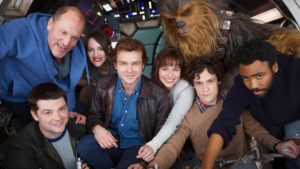
The making of the original STAR WARS sounds like the process of making a larger than average budget exploitation flick. Lucas had an idea, Gary Kurtz helped him wrangle the money, and the two men put together a ragtag team of artists, actors, and other creative types to bring the original film to life in 1977. Ralph McQuarrie, Willard Huyck, Gloria Katz, John Dykstra, and the real MVP’s, editors Richard Chew, Paul Hirsch, and Marcia Lucas—this crew deserves as much credit for the look, feel, and tone of STAR WARS as much as the bearded one. That’s not to discredit George Lucas as a writer and the creative center of the project. The man took his love of film, fast cars, and FLASH GORDON serials and synthesized it into something very unique and groundbreaking; today STAR WARS (as well as most of Bogdanovich’s output) would be considered “throwback cinema). George Lucas himself was very much the living Force, bringing everyone together.
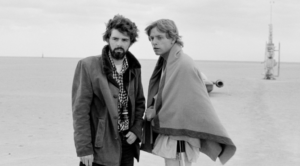
But when you run down a list of what’s memorable about the original STAR WARS its the characters, the special effects, the dialogue, and the story are likely what comes to mind, not impressive shots or Oscar-caliber performances from the actors. Most of Lucas’ camera work—with director of photography Gilbert Taylor (THE OMEN, DR. STRANGELOVE)—is very point and shoot. This can be a result of a more classic approach or even limitations in technology, which apparently plagued Lucas through most of the making of the film. Hamill, Ford, and Fisher’s performances in the film are just fine—nowhere near as bad as prequel supporters would have you believe—but for the most part, the cast is playing archetypes and it would appear that Harrison Ford is simply playing himself.
The director is the boss; they work with the actors, they literally call the shots. STAR WARS films from day one have been more focused on the story, the soap opera elements, and of course, brilliant, groundbreaking special effects.
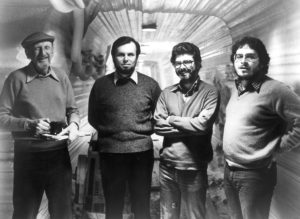
THE EMPIRE STRIKES BACK is arguably the fan favorite of the now eight film franchise, and plenty of credit is deservedly given to director Irvin Kershner. He does have the honor of being the first person to direct a STAR WARS entry aside from Lucas (outside of Steve Binder and David Acomba who helmed the ill fated Star Wars Holiday Special). While the original STAR WARS is a slam-bang adventure tale, custom made for a Saturday afternoon expounds further upon the characters and their motivations without sacrificing the action beats that a sci-fi adventure requires. After all, it is still a “kids movie,” albeit a mature film that doesn’t talk down to its audience. Kershner was a film instructor and mentor to George Lucas during his time at USC. Lucas wanted Kershner to helm the second film in the STAR WARS saga because Kershner “[knew] everything a Hollywood director is supposed to know.”
“But you’re not Hollywood,” Lucas explained to Kershner. Kershner retained the Saturday matinee serial sensibility, while arguably getting better performances out of the actors than Lucas ever could (and Lucas’ direction in the prequel trilogy goes to that point).
“In shooting the film, I had to make three characters come alive—not just act alive, but come alive. Mark [Hamill] was incredible. He interpreted the character, gave him depth, he was a true trooper, and he was up to every challenge. Working with Yoda was a real challenge.”
“Carrie was very young and had not done that much work, but she was very, very bright. I possibly didn’t give her the time I should have—I was thinking of so many things—but I didn’t want to mess with her instincts because she seemed to be an intuitive actress. And she would get into a scene remarkably well so I decided to leave her alone and give her as little instruction as possible. I think it worked—her performance was wonderful.”
“Harrison had to play a real character with humor, depth, and love for Princess Leia. With him, I could make a simple adjustment here and there and he was very, very good.”
For the most part,(Lucas and Kershner had a difference of opinion on Han Solo’s response to Leia’s “I love you;” Kershner won) Lucas allowed Kershner complete control as a director on EMPIRE. That was the last time that would happen on a STAR WARS film before THE FORCE AWAKENS.
““I think George was occasionally frustrated with the coverage Kershner shot,” explained Joe Johnston to Uproxx in 2015. “He refused to shoot a master, a cardinal sin in George’s book.”
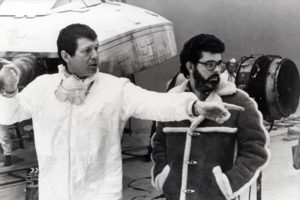
When it came time to shoot RETURN OF THE JEDI, it appeared that Lucas wanted a pushover, someone who would shoot the film the way he wanted it to look: enter Richard Marquand, an Emmy winning television director. According to J.W. Rinzler’s The Making Of Return Of The Jedi, it would seems that Lucas was constantly looking over Marquand’s shoulder—making sure he shot those master shots—so that George could make the film in the editing room. “My guess is that George saw Marquand as a guy who could go out and amass the great-looking footage that George would mold into the film in post,” speculated Johnston. While David Lynch was briefly considered for the role of director on JEDI, had he taken the job, the only thing that would potentially be different would that Lynch—a more talented director than Marquand—would have gotten top notch performances out of his cast like Kershner. Audiences would not have been treated to an Ewok’s severed ear or Darth Vader sucking down amyl nitrate. RETURN OF THE JEDI would have very much been Lucas’—the producer—film.
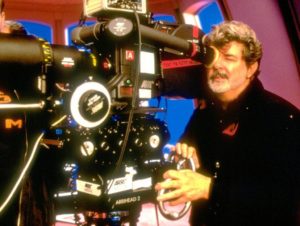
From that point on, the STAR WARS films became a producer’s medium rather than a director’s. Lucas helmed the following three prequels with Rick McCallum playing yes man all the way to the bank. Lucas may have sat in the director’s chair, but he was acting acting as a producer the whole time, making sure a product gets out. In 2012 when Disney bought Lucasfilm, Kathleen Kennedy became president and began managing the brand in a style similar to what Kevin Feige had been doing as president of Marvel. The endgame was to have a continuation of the original films, a series of spin off, anthology films, cartoons, and of course merchandising, merchandising, where the real money from the movie is made.
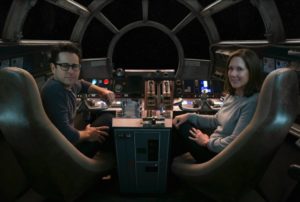
J.J. Abrams was quickly signed on to for all intents and purposes “reboot” the STAR WARS brand. He was a safe choice for Kennedy as Abrams had already pulled off the slyest fanboy coup of all time: he had—for all intents and purposes—turned STAR TREK into STAR WARS with his 2009 reboot. Abrams was a longtime fan who had displayed full force that he understood “the STAR WARS style.” From there Gareth Edwards and Rian Johnson were signed on to direct ROGUE ONE and THE LAST JEDI respectively. Two relatively intune choices with both directors having helmed large scale, sci-fi action films in the past.
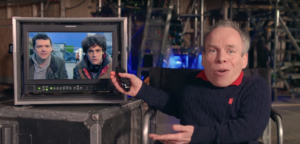
The hiring of Phil Lord and Christopher Miller was a bit of a left-field—but welcome—choice, having a background in broad comedy. The script for the Han Solo film was penned by Lawrence Kasdan with his son Jake, and the elder Kasdan has expressed that there needs to be a certain sense of delightfulness to a STAR WARS film.(After the first exchange between Poe and Finn in the FORCE AWAKENS, I knew everything was going to be ok) His work on THE FORCE AWAKENS arguably is what brought prequel deniers back in the fold with the return of his sharp, quippy dialogue. Bringing Colin Trevorrow was a more controversial decision. Despite JURASSIC WORLD being a massive hit at the box office, fans and critics were decidedly lukewarm to the film (I did not like it at all). There was also a question of how a man with a scant six director credits to his name got chosen to helm what is already one of the most anticipated films of all time. When Trevorrow was hired, I knew it meant nothing. When Lord and Miller were brought on and subsequently let go, I knew it meant nothing. When ROGUE ONE was brought back in for reshoots, I knew it meant nothing. And when Trevorrow split from EPISODE IX today, I knew it meant nothing. The real person in charge of the direction of STAR WARS is Kathleen Kennedy.
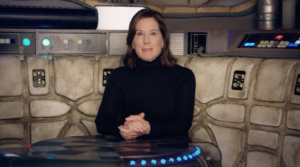
This third wave of STAR WARS films is very much adhering to the Marvel playbook, which has more in common with a television series than big budget filmmaking of the past. On the small screen, directors are certainly brought on for their talents, be it with visuals or working with the actors, but it’s the showrunner that sets the tone of the show. Breaking Bad, Mad Men, The Wire, Game Of Thrones; all of these series featured episodes directed by a slew of different directors, but it was very much the showrunner that maintained the tone, feel, and style across the board. That’s why all the Marvel films sort of feel the same, even a risk like the original GUARDIANS OF THE GALAXY. Kathleen Kennedy is very much the showrunner of the STAR WARS franchise, and no matter who thinks they’re in the pilot’s seat, she’s the one flying the ship.
And that’s perfect. Kennedy deserves to be the boss. She knows exactly what she’s doing. Kennedy is the George Lucas of the new wave of STAR WARS films.
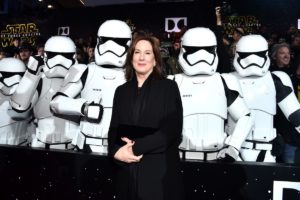
Earlier this year, Vanity Fair called Kathleen Kennedy “the most powerful woman in Hollywood.” She is certainly the most powerful woman in the STAR WARS galaxy. Kennedy oversees every little detail, it would appear, and is very active with the making of these films and she’s worked with the best. She got her start in 1982 working with Spielberg and stayed by the director’s side through most of the INDIANA JONES films, JURASSIC PARK, SCHINDLER’S LIST, and LINCOLN. MUNICH and LINCOLN scribe Tony Kushner told Vanity Fair:
“She talked about the way in which the conventional approach to these things is that a script starts from an outline, and that’s what everybody focuses on before there’s a word of dialogue.”
Kushner added that Kennedy wanted to focus on the characters of the new STAR WARS films, not so much the action. “Who are these people? I don’t know who these people are.”
And the characters—not the spaceships or the worlds—are the heart of the STAR WARS saga.
Kennedy persevered through the making of THE FORCE AWAKENS—not only creating a hit—but putting in motion a film that plenty of STAR WARS enthusiasts thought that they’d never see come to fruition.
And then she kept the ball droid rolling.

Looking at Kennedy’s track record with STAR WARS, she knows what she’s doing—certainly more than Lucas and McCallum did with the prequel trilogy.
She very much has the fans in mind, be it for love or money. She’s done the research, she knows what STAR WARS should look, smell, and taste like. ROGUE ONE was touted as being a major departure for the franchise: a serious war film. While it certainly strayed from the Skywalker saga aesthetically (no opening crawl, no John Williams score) it still very much moved like a STAR WARS film did, albeit with a more deadly ending.
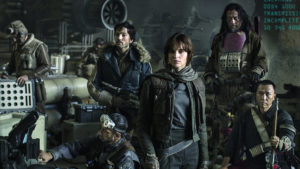
For better or worse, there’s going to be a STAR WARS movie at least every year until the day you die, and at this point, they’re all going to be O.K.. The idea of a truly great, truly interesting, STAR WARS film from an auteur director is a concept that only exists a long time ago in a galaxy far, far, away.
-MIKE VANDERBILT
@MikeVanderbilt
- Vampsploitation - January 15, 2018
- Hiatussploitation - December 5, 2017
- Live From Fantastic Fest, 2017 - September 28, 2017
Tags: Colin Trevorrow, David Lynch, George Lucas, Han Solo, J.J. Abrams, Kathleen Kennedy, return of the jedi, Rick McCallum, Ron Howard, star trek, star wars, The Empire Strikes Back, The Force Awakens

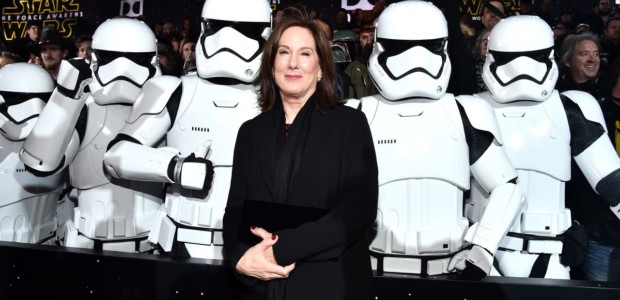
No Comments